A Comprehensive Guide to Growing Succulents From Cuttings and Leaves

If you’re looking to start your very own house plant collection, we suggest starting with a succulent. Yes, they’re hard to kill for new plant parents, but they’re also beautiful plant varieties that add greenery to any room.
Like other plants, you can successfully reproduce succulents from cuttings, all in the comfort of your own home and without any complicated methods. It’s a simple, straightforward process that will have you growing new plants in no time—enough to fill your very own succulent garden.
This guide will teach you how to grow succulents from cuttings and from offset growth, or pups.
Photo via Joy Us garden
How Do Succulents Differ from Other Houseplants?
The houseplant craze wouldn’t be where it is today without succulents adorning desks and windowsills. Even if you’re unfamiliar with the succulent family, you’ve probably heard of or seen a cactus—one of the most popular succulent plants out there.
Prickles aside, a cactus’ ability to store water is what really sets it apart from other members of your houseplant collection. Consider pothos, a very common houseplant. It’s vining, leafy, and requires routine watering whenever the soil dries out, usually every week or so (via Wisconsin Horticulture).
Succulents like cacti, aloe vera, and snake plants usually require watering once every two weeks when the soil completely dries out, but less is absolutely more with these plant types. That’s because the cells of succulents are equipped to take up water until they are completely full and release the moisture over time as the plant needs it. This way, the plant is able to thrive in dry, desert environments with long periods of drought, because it has a reserve of water ( Britannica).
You still need to water your succulents, but there’s no need to overdo it. Looking for more plant care tips and tricks? Check out our pointers in the section “How to Care for New Succulent Plants” below.
Photo via Ann
How to Grow Succulents from Cuttings
Propagation is a term horticulturalists use for growing new plant specimens from pieces of an original parent plant (via NC State University).
Cuttings (leaves, branches, new growth) are carefully taken from the parent plant and transplanted into a new growing medium, where they establish roots and are cared for as they grow into a mature plant.
The process is used in fruit and vegetable growth, as well as in the reproduction of houseplants. Succulents are not exempt—you can propagate them too. We list two ways to do so, starting with how to grow succulents from their cuttings, or how to propagate them.
Cutting leaves and stems for transplanting is a very common way to propagate plants. If you’re not sure where to start, read through the step-by-step instructions below.
Propagate Plants in Water
Tools and Materials Needed:
- Parent stock plant (existing succulent)
- Hand shears
- Paper towel
- Potting mix
- Starter pots with drainage holes and trays
1. Select a Piece from the Parent Stock
In order to propagate, you’ll need an already existing succulent plant. So, if you don’t have one, go pick one out at your local nursery. Once you’ve secured your succulent of choice—this is your parent stock—examine it for healthy growth.
Ideally, you should try to cut off leaf or stem pieces that are between one and three inches in length and plump, but not soggy (via Miracle-Gro). Once you’ve found a suitable piece, use hand shears to gently clip it off.
2. Dry the Clipping
The tiny piece of succulent that you just trimmed off will be your new plant. It needs some time to heal, though, so lay it on a piece of paper towel and let it air dry for a few days until the cut has been calloused over.
3. Prepare Pots
Assemble your plant pots and trays and fill them with a well-draining potting mix. For tips on selecting the right soil, see our advice two sections down.
4. Transplant
Once the pots are prepared and your trimming is healed, you have two options. If it’s a leaf, all you have to do is press it down into the soil. If it’s a piece of stem, bury it about an inch or two into the soil. That’s it! It’ll take a few weeks to root, so until then lightly water and mist it regularly to keep it hydrated and healthy.
Photo via Ann
How to Grow Succulents from Offset Growth
If you already have a mature succulent plant, you may notice something called offset growth—sprouts that occur at the base of your plant, often called “pups”. They look like mini versions of your already-existing parent plant.
These can be removed and propagated to grow into their own separate succulents, which is exactly what we’re going to teach you how to do.
Tools and Materials Needed:
- Succulent plant with offset growth
- Potting mix
- Pot with drainage holes
1. Remove Growth
Offset sprouts are pretty easy to identify; they’ll be growing around the base of your plant, and just look like smaller replicas of your mature succulent.
Once you’ve found one, give it a gentle tug to make sure it resists—this means it has developed its own roots and is the perfect specimen for propagation. You can simply use your hands to wiggle it out of the soil.
2. Prepare Soil
Fill a pot (one that has a drainage hole) with potting mix. Use your finger to make a small indentation in the soil. This is where you’ll root your offset sprout.
3. Transplant
With your offset sprout and pots ready, you’re all set to transplant your succulent into a pot. All you need to do is fill in the soil indentation you made with your offset piece, and pat the soil in around the roots so they’re covered well.
Give the roots about one week to adjust to their new environment, and then follow our tips below to give your growing succulent the TLC it needs.
Photo via Kelly@mysoulfulhome
How to Care for Young Succulent Plants
Succulents are hardy and resistant plants and usually grow just fine under minimal requirements. But that doesn’t mean you can neglect it and expect it to thrive. Here are some things to keep in mind when tending to your new succulent plants:
1. Make sure the soil drains well
The potting mix you transplant with should have the optimal draining capabilities. Remember, your succulent will absorb and store water for long periods of time, so stay away from soil mixes that hold water. This will lead to root rot, which could permanently damage your young plant. It’s best to transplant to pots that have several drainage holes, too, for optimal water flow.
2. Pay attention to your plant’s need for water
Aside from checking the soil for moisture, your succulent will begin to show visible signs if it’s thirsty. If you’re unsure whether or not to water your plant, look for wrinkles in the tissue and drooping stems and leaves. A well-hydrated succulent will have plump, firm, full leaves that retain moisture, so if it feels soft and weak, it probably needs a drink and a misting (via Las Vegas Review Journal).
3. Use a bottom-up watering method
Instead of using the traditional top-down method where you pour water over the soil, the best method you can use to water your succulent is bottom-up. Place a potted succulent in a dish full of water—the roots will take up the water through the drainage hole, and quench the soil as needed. Remove when the soil feels moist.
4. Give your growing succulent some love with a fertilizer
Like other plants, succulents can benefit from a nutrient-rich fertilizer every now and then once the young succulent is about a month old. Just follow the product directions to use.
5. Adjust sunlight as needed
Succulents love the sun and need several hours of it every day, but powerful, direct sunlight can be harsh on your newly growing plant. For recently transplanted cuttings, indirect sunlight will be a gentler method until it’s matured to a month old.
By following the steps outlined in this guide, you'll be on your way to creating a thriving succulent garden full of beautiful and unique plants.
Have you grown a succulent before from its cuttings? Share your succulent success stories below!
Happy propagating!



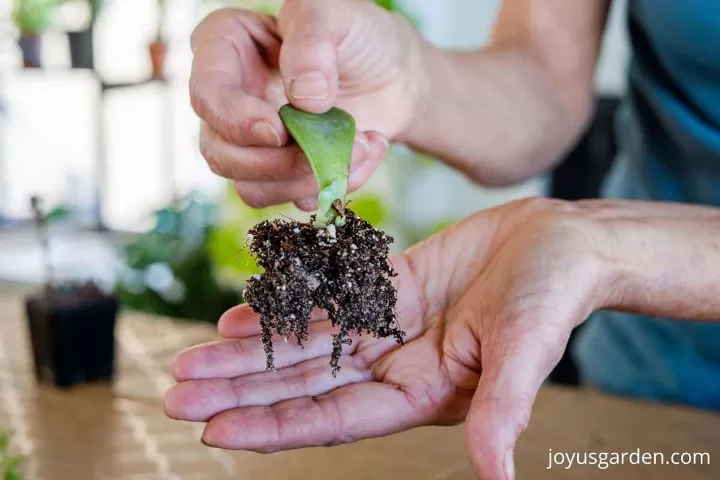



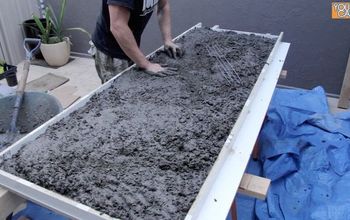




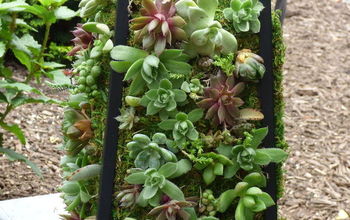
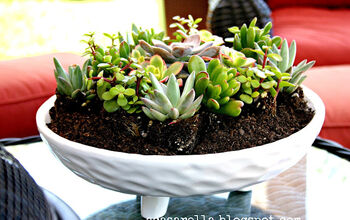


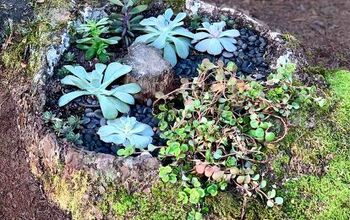







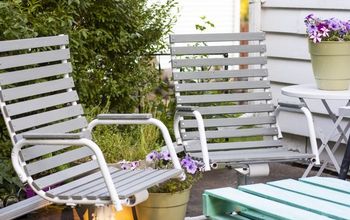





Frequently asked questions
Have a question about this project?